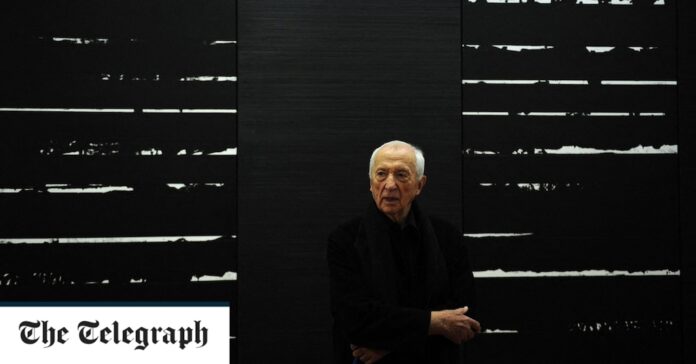Unlike revered contemporaries such as Rothko, who died in mid-life, Soulages enjoyed one of the longest careers in the history of art
Pierre Soulages, who has died aged 102, was a French painter once described by President François Hollande as the “world’s greatest living artist”.
The last of the radical post-war abstractionists and a national treasure in his homeland, Soulages forged a career spanning three quarters of century, becoming famous for monumental monochrome canvases that earned him the nickname “the painter of black”.
Soulages understood the mercurial nature of the colour. Where others saw bleakness, he saw potential. “When light is reflected on black, it transforms and transmutes it,” he said. “It opens a mental field all its own.” And while the dark dense geometry of his compositions could seem urban or architectural in tone, Soulages’ inspiration came, obliquely, from the cultural history of southern France, where he had grown up in the years following the First World War.
A prominent figure in the Art Informel movement of the 1940s and 1950s, a European variation on American Abstract Expressionism, Soulages gained international recognition following his inclusion in two landmark New York exhibitions of the period: Younger European Painters (Guggenheim, 1953) and The New Decade: 22 European Painters and Sculptors (MoMA, 1955).


